
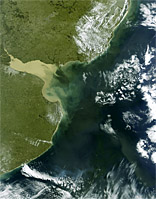
Rio La Plata
16. March 2008,
orbit: 31598
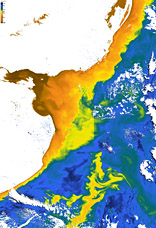
Backscatter coefficient of suspended matter
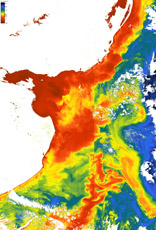
Chlorophyll concentration
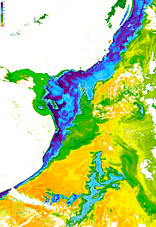
Quality measure of the inversion procedure (chi square)
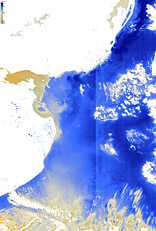
Aerosol optical thickness at 550nm
Click on the small images above to get the full resolution image (appr. 5÷6MB)

